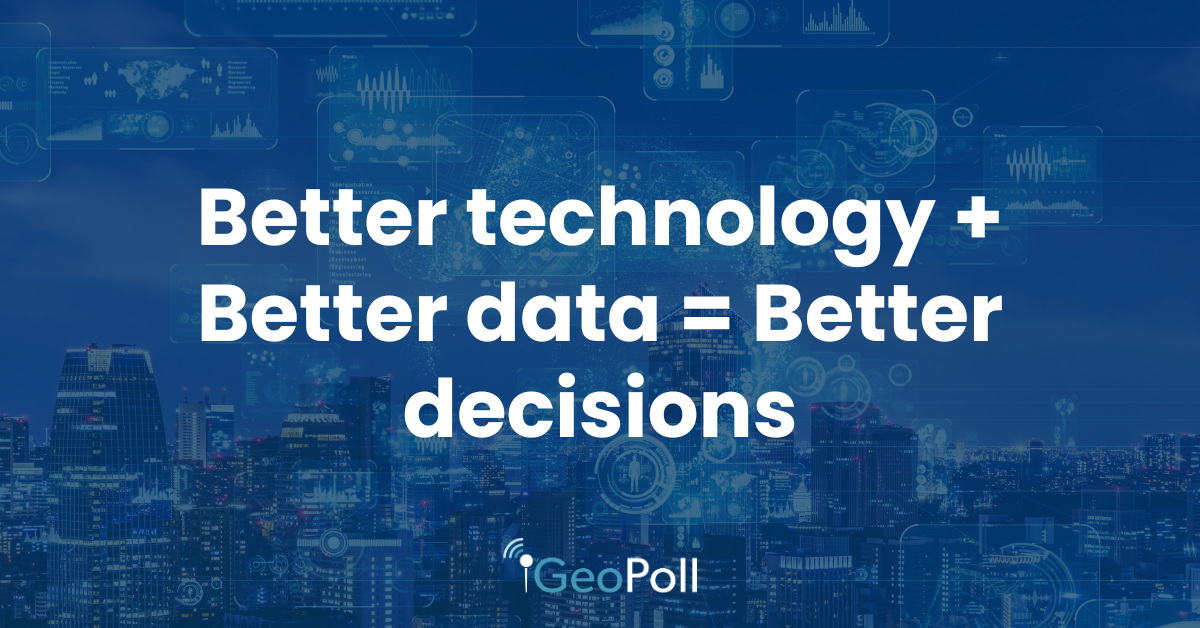- Contents
It’s the digital age, and the fusion of innovative technology with high-quality data collection is paramount and is reshaping the landscape of research and decision-making. The integration of advanced technological tools in data collection and analysis leads to more informed, accurate, and timely decisions.

The Transformation of Data Collection Methods
Data collection methods have evolved significantly, transitioning from traditional paper-based surveys and in-person interviews to more sophisticated, technology-driven approaches. This evolution is driven by the need to overcome challenges such as high costs, time constraints, and accessibility issues in remote or hard to reach areas.
Modern data collection leverages mobile and internet technologies, offering several advantages:
- Broader Reach: Mobile-based methods, including SMS, voice calls (CATI), and internet-based surveys (such as mobile web, WhatsApp, and email surveys), enable access to broader audiences, including remote or marginalized communities.
- Speed and Efficiency: Digital tools facilitate quicker data collection and processing, allowing for real-time insights and faster decision-making. GeoPoll has deployed fast surveys even in times of natural disaster or conflict, with real-time data flowing in to help stakeholders act fast.
- Cost-Effectiveness: Reduced logistical and operational costs make large-scale surveys more feasible and frequent. You can run surveys in multiple countries from the comfort of a single office.
Improving Data Quality through Technological Innovations
The accuracy and reliability of data are crucial. Technological advancements play a key role in enhancing the quality of data collected:
- Real-Time Data Monitoring: Technology platforms such as GeoPoll’s allow for immediate data tracking and analysis, ensuring timely identification and resolution of discrepancies.
- Automated Quality Controls: Algorithms can efficiently detect and correct errors, enhancing data integrity.
- Geo-Location Verification: All data privacy elements considered, geolocation technology confirms the geographical location of respondents (and interviewers in CAPI Surveys), adding a layer of authenticity to the data.
Data Processing and Reporting: Turning Data into Insights
Transforming vast datasets into actionable insights is a critical step in the decision-making process. Advanced data processing systems are capable of handling large volumes of data, converting them into meaningful information through:
- Analytical Tools: Data analysis software helps identify trends, patterns, and correlations fast.
- Visualization Techniques: Data visualization tools, including charts, graphs, and infographics, aid in presenting complex data in an understandable format.
- Customized Reporting: Tailored reports meet specific needs and objectives, ranging from comprehensive analytical reports to concise summaries.
The bottom line – Better technology + better data = better decisions
The future of decision-making is increasingly reliant on the synergy between technology and quality data. This trend is not just about collecting information; it’s about equipping decision-makers with accurate, comprehensive, and timely insights.
The continuous advancement in data collection and analysis technologies promises more nuanced, rapid, and cost-effective research methods. This evolution is crucial for understanding complex global phenomena and making informed decisions in various sectors, from development and humanitarian aid to market research and public policy.
At GeoPoll, we have created a unique technology platform that handles the entire research process, from questionnaire development to reporting. The result is an unprecedented speed at scale, high-quality data, and reporting outputs that truly drive decisions. Contact us to learn more about our platform and survey research capabilities.
